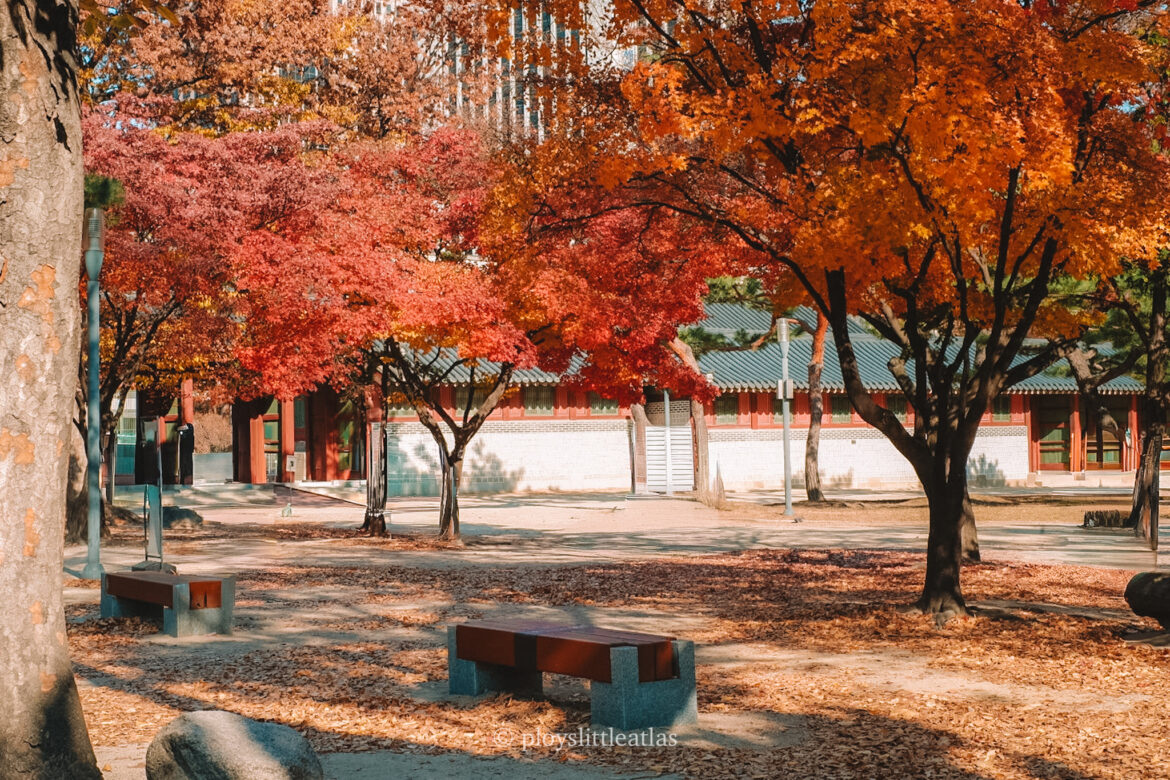This year, my annual quest to soak in Seoul’s autumn brilliance got a late start. With the calendar whispering that December was just a week away, I feared I had missed the season’s grand finale. But, driven by a stubborn hope and a pair of itchy feet, I found myself at the gates of Deoksugung Palace. It was a decision I’m now immensely proud of, for the palace grounds were bursting with autumn’s fiery colors in a spectacular, last-minute display!
If you think you’ve missed the peak, think again. Let me share the breathtaking beauty I found and give you the tips to make the most of your own autumnal visit to Deoksu Palace.
About Deoksugung
Nestled in the heart of bustling downtown Seoul, right across from City Hall, Deoksugung is a unique palace that tells a story of Korea’s turbulent journey into the modern era. Unlike other palaces, it seamlessly blends traditional Korean hanok structures with Western-style stone and brick buildings, a poignant reflection of the early 20th century. It served as a royal residence during the Joseon Dynasty and the short-lived Korean Empire, offering a quiet, contemplative escape from the city’s skyscrapers.
Autumn Spots to Capture the Foliage at Deoksugung
Within the stone walls of Deoksugung, autumn paints a masterpiece. Here are the spots that left me in awe:
Sarang Cafe Area:
Right behind the ticket office, you’ll find a serene pond surrounded by deciduous trees. Perched beside it is a small, picturesque hanok. This building used to operate as the Sarang Cafe, a spot I’d long wanted to visit. While the cafe is sadly no longer there, the scene itself remains a perfect postcard of autumn tranquility. It’s a space full of potential, and we can only wait to see what it becomes in the future.
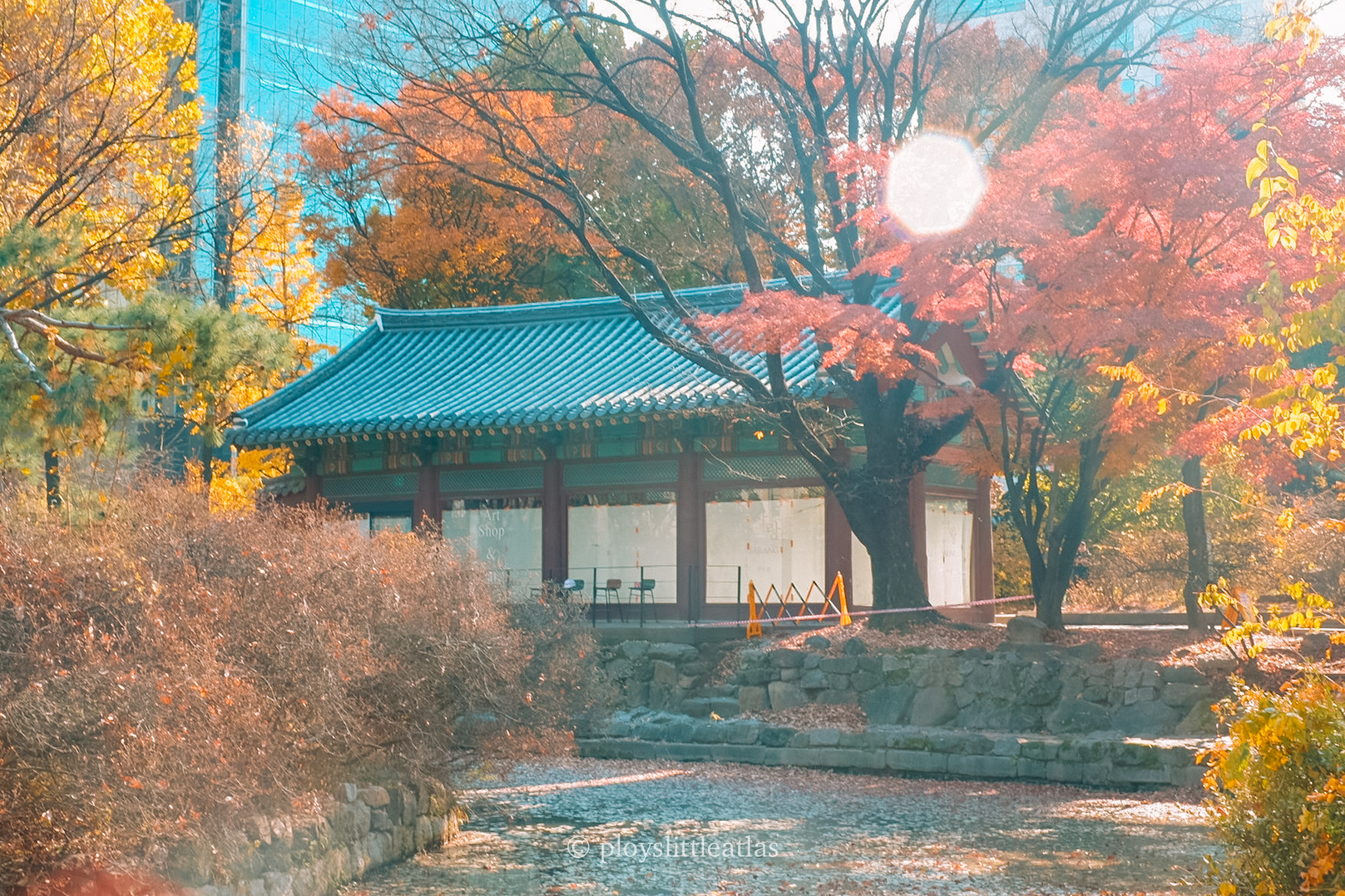
Jeonggwanheon Pavilion:
Venture to the northeastern part of the grounds to find this fascinating pavilion. Its design is a captivating mix of Eastern and Western architecture, but what truly completes the scene is the cluster of ginkgo and maple trees nearby. The vibrant yellows and reds framing the unique structure create a mind-bogglingly beautiful picture.
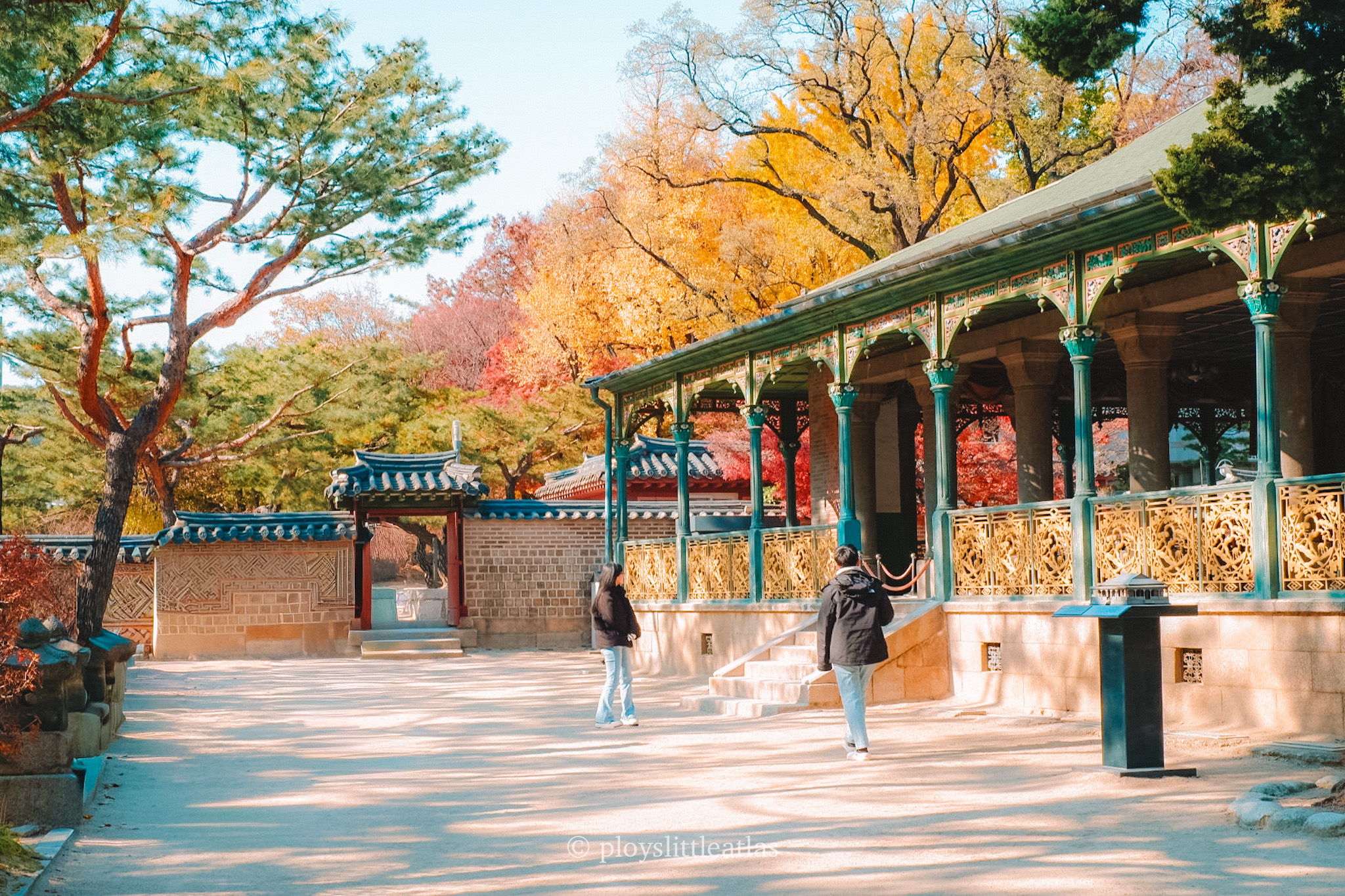
The Trail behind Junmyeongdang:
This was the most beautiful find of my visit! After seeing Jeonggwanheon, pass through a threshold door, and you’ll discover a secluded, forestry trail behind the Junmyeongdang annex. Flanked by tons of maple trees, this path was a tunnel of fiery red and orange. I was completely bewildered by the scene of autumn at its absolute prime—it was truly unforgettable.
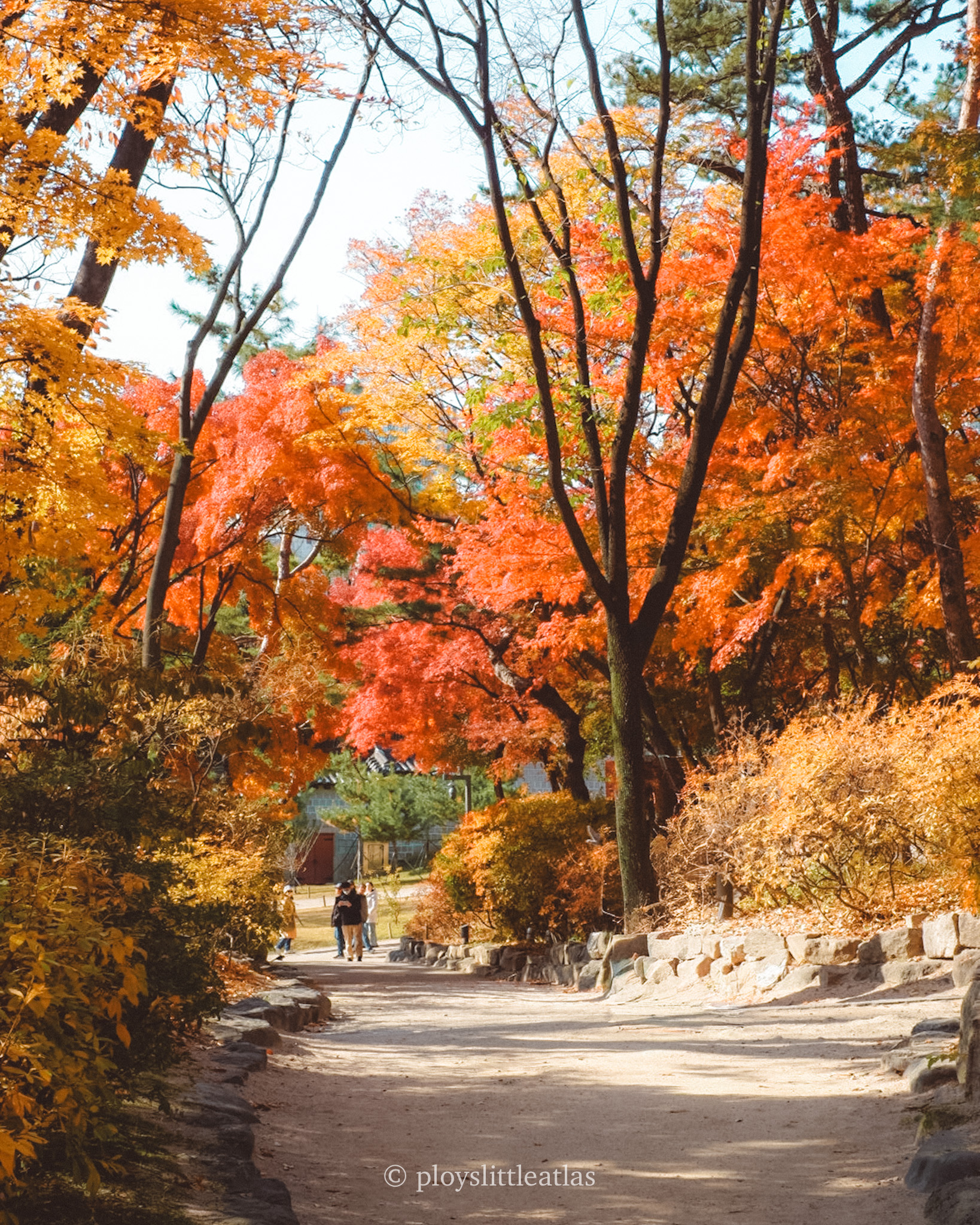
Deoksugung Management Office (Dondeokjeon):
Located by the Pyeongseongmun Gate, this red-brick building is a stunning example of Western architecture. It once held a grand banquet for Emperor Gojong and now houses historical exhibitions. The building’s striking red facade becomes even more stunning when the surrounding trees explode in a contrast of gold and crimson.
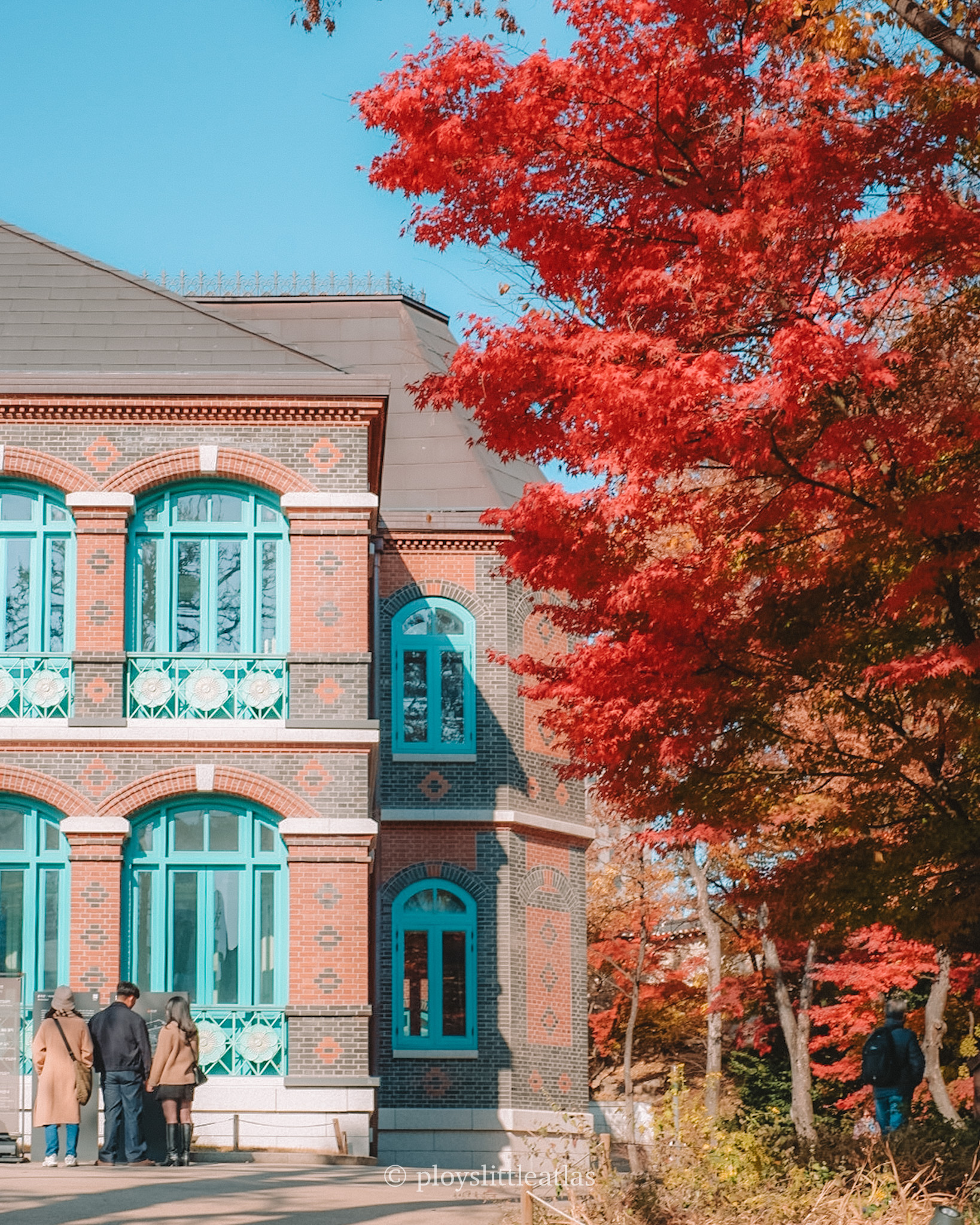
Around Junghwajeon:
At the heart of Deoksugung stands Junghwajeon, the magnificent main throne hall. The area around this prominent hall is dotted with ginkgo and assorted maple trees. Taking a leisurely walk here allows you to witness the beautiful phenomenon of colorful autumn leaves framing the elegant hanok elements—a classic and always pretty touch of Korean fall.
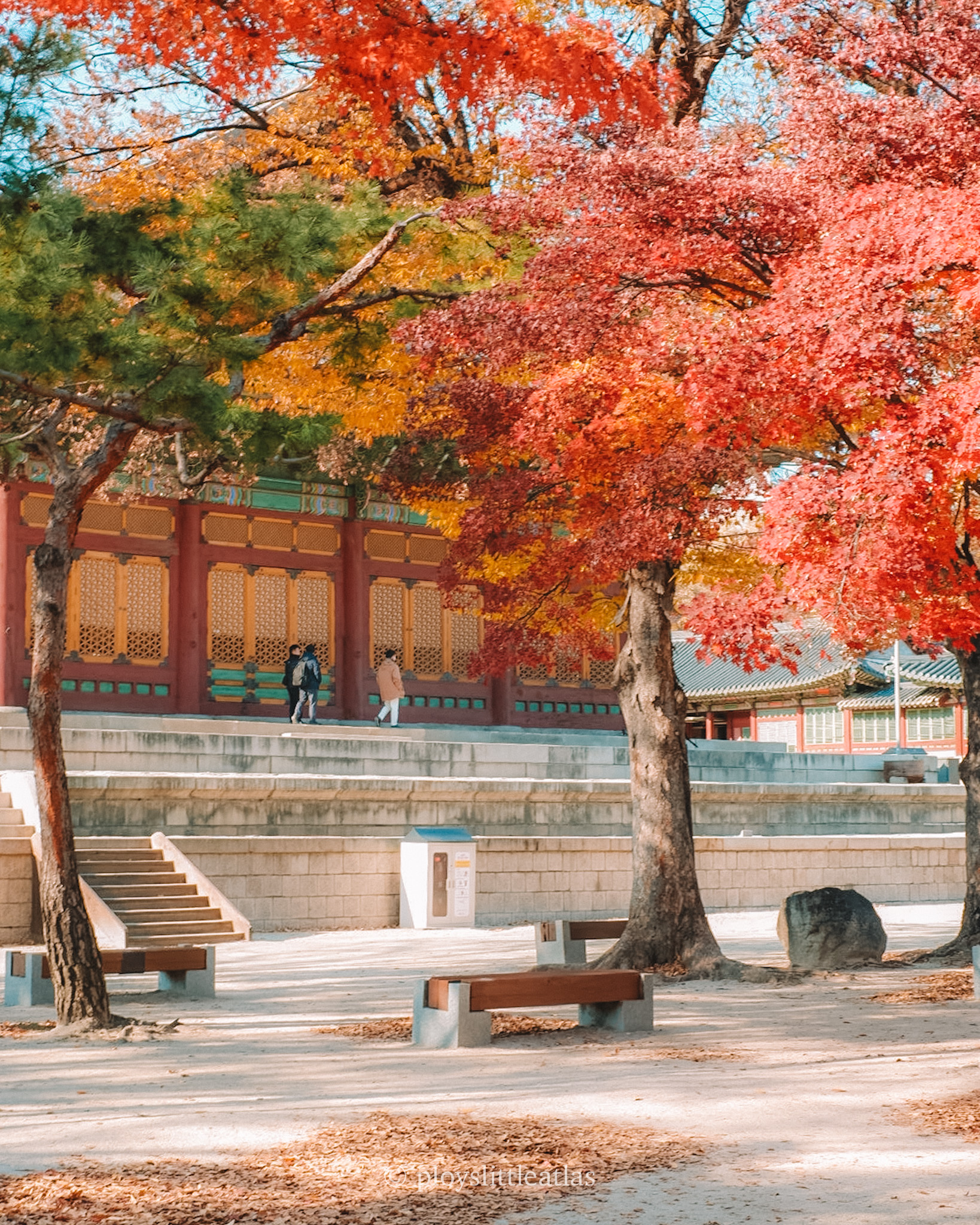
When is the Best Time to Visit?
Timing is everything. Based on my observation, the deciduous clusters within the palace walls seem to reach their peak quite late compared to other foliage spots in Seoul. If you’re hoping to see the stunning golden sights featured in this post, aim for mid-November. My visit was on November 19th, and the trees were an absolute vision.

Pro Tips for Your Visit
To ensure you have a seamless and enriching experience, here are some detailed tips for planning your trip:
Ticketing and Hours: Purchase your ticket at the booth right by the main entrance (Daehanmun Gate). The entrance fee is a very affordable 1,000 KRW (less than $1 USD). The palace is generally open from 9:00 AM to 9:00 PM, but note that the last admission is at 8:00 PM. The interior halls typically close earlier, around 8:00 PM, so plan to arrive with plenty of time to explore both the grounds and the buildings.
Weekly Closure: Like most palaces in Seoul, Deoksugung is closed every Monday. If Monday falls on a public holiday, the palace will typically close the following day instead, so it’s always good to double-check their official website before your visit.
The Must-See Ceremony: Absolutely do not miss the Changing of the Royal Guard ceremony at the main gate. This colorful and precise reenactment is a highlight for a reason. It takes place three times a day: at 11:00, 14:00, and 15:30. The ceremony is held every day except Mondays. Be aware that it is also canceled in cases of rain, snow, or extremely severe weather (either very hot or very cold).

The Stone-Wall Road: After your palace visit, take a stroll along the famous Deoksugung Stone-Wall Road (정동길) right outside the palace perimeter. It’s a beautifully scenic walk, especially in autumn, and is famously romantic—though local legends humorously warn that couples who walk it might break up!
How to Get There
Deoksugung could not be easier to find, thanks to its central location.
By Subway: The most convenient way is to take the subway to City Hall Station.
Lines 1 & 2: Use Exit 2 or Exit 3. After ascending the stairs, you will see the majestic stone walls of Deoksugung and its main Daehanmun Gate directly in front of you. It’s less than a one-minute walk from the exit.

So, if you find yourself with a late autumn day in Seoul, don’t hesitate. Make your way to Deoksugung. It’s a final, fiery gift from the season, waiting to be discovered.
Access Map:
Did this entry help you? Or Did you enjoy my photos? Help support my small blog by giving a little cup of joe. I am always grateful when readers reach out wanting to support 🙂
p.s. This post is independently created. However, when you book or purchase something through the retail links, I may earn an affiliate commission to help keep Ploy’s Little Atlas running. Thank you very much for your support!
p.p.s All images used (unless specified) are owned by the author of the blog and permission is required for a repost. Please, reach out via social media channels to ask beforehand if you’d like to use them.
